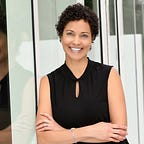How the Brain Processes Mixed-Race Faces
A look at the stereotypes that inform our expectations
 “Usually very physically attractive,” said one survey respondent. “They’re always beautiful people,” said another. “Most often a gorgeous mix.” The comments continued. “Biracial babies are pretty.” Mixed-race people are “glamorous and exotic.”
“Usually very physically attractive,” said one survey respondent. “They’re always beautiful people,” said another. “Most often a gorgeous mix.” The comments continued. “Biracial babies are pretty.” Mixed-race people are “glamorous and exotic.”
These were just some of the comments from a July 2019 study in which 1,100 mostly White respondents were asked what stereotypes they thought society had about multiracial people. Researchers found that one nearly universal stereotype was common to all biracial groups: attractiveness.
The study is important, says Sylvia Perry, co-lead author of the study and assistant professor of psychology at Northwestern University, because “stereotypes inform our expectations. They help us decide whether or not we choose to form friendships or relationships” with those we meet.
Survey respondents also agreed that multiracial people “don’t belong,” are “generally confused,” and “lack a cultural identity.”
Perry’s study, which was completed together with co-authors Allison Skinner and Sarah Gaither, is just one in a growing field of expanding research on multiracial identity. More and more psychologists, social scientists, and other health professionals are…
